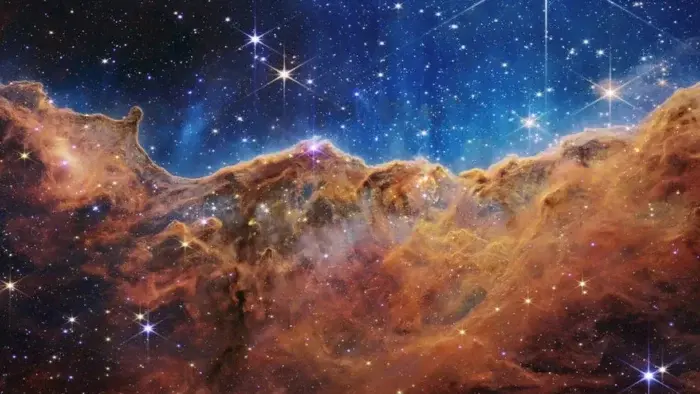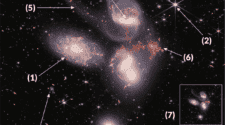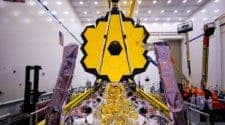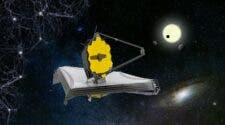The latest images from the NASA James Webb Space Telescope is even more wonderful than previous releases. These new images reveals the exotic galaxies and vibrant nebulas with so much details. The science observatory or this telescope is stunning and the images reveals its capacity. These are the first set of images from the James Webb Space Telescope (JWST). The images was released a few days ago by US President Joe Biden and NASA at the White House.
One of the images is a part of the night sky, SMACS 0723. This images reveal the array of distant galaxies in their thousands all in just a small dot. According to NASA, this image is the “deepest infrared image of the Universe”. It also claims that the galaxies in the image had to travel no less than 13 billion years to hit JWST. The capacity of JWST is massive and penetrating into the cosmos is just one of the many things it is capable of.
The observatory also gathers light from distant Universe using its huge 21-foot-wide gold-coated mirror. It is also capable of gathering light from our Solar System as well as from other far planets. Since the observatory still has about 20 years, there is still a lot more to come.
“What happened after the Big Bang? How did the galaxies grow? How did the first black holes grow? What happened all the way from there to here?” John Mather, a Nobel Prize-winning cosmologist at NASA, asked during a livestream of the photos’ reveal. “So this is our time machine.”
Well, while these images are amazing and wonderful to look at, they are just a tip of the cosmic iceberg. Below are some of the absolutely amazing images from JWST
1. Stephan’s Quintet
The name of this image is a reflection of the content of the image. It shows a combinantion of no less than five galaxies with colourful stars and galaxies arrays. The galaxy in the top left is quite close to the earth in the foreground. However, the others are about 300 million light-years away. The image also reveals about two galaxies at the middle of the image actively merging.
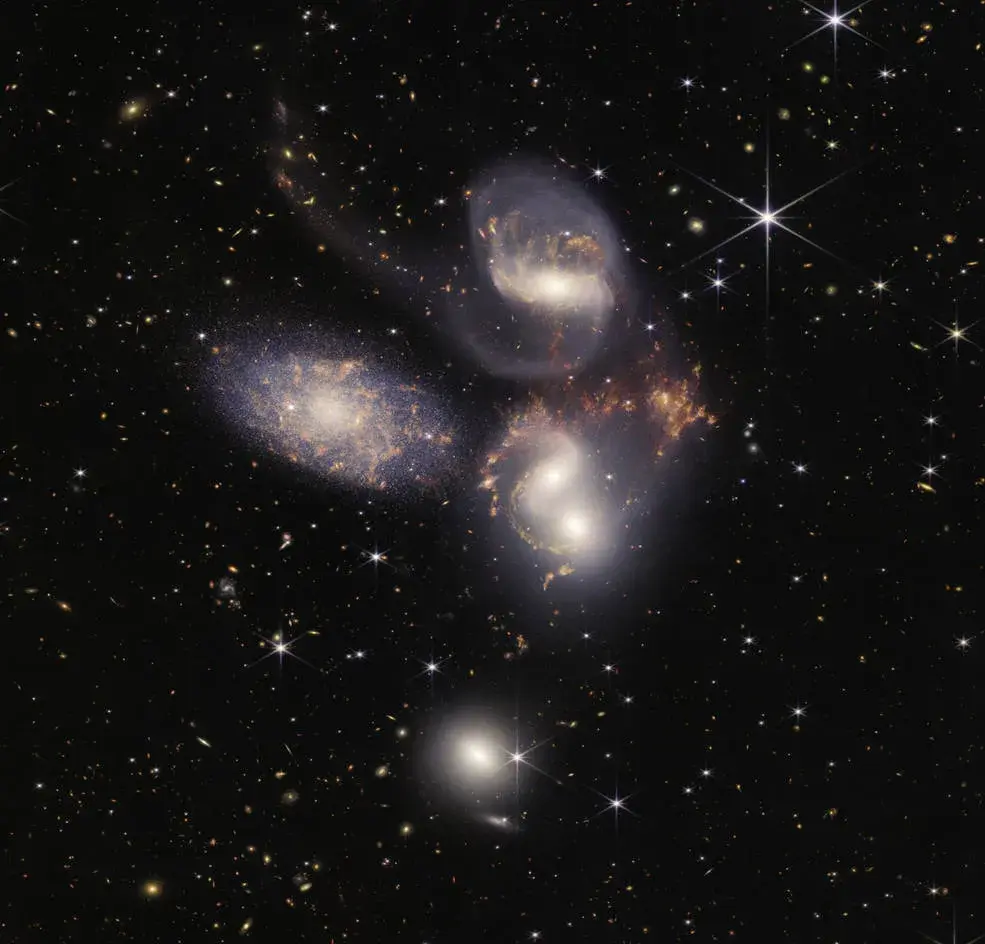
Giovanna Giardino, a NIRSpec instrument scientist at the European Space Agency, said
“This is a very important image and area to study, because it really shows the type of interaction that drives the evolution of galaxies — that’s the mechanism of galaxies’ growth,”
Giardino adds
“That’s an active black hole,”“We cannot see the black hole itself, but we see the materials swirling around, being swallowed by this sort of cosmic monster.”
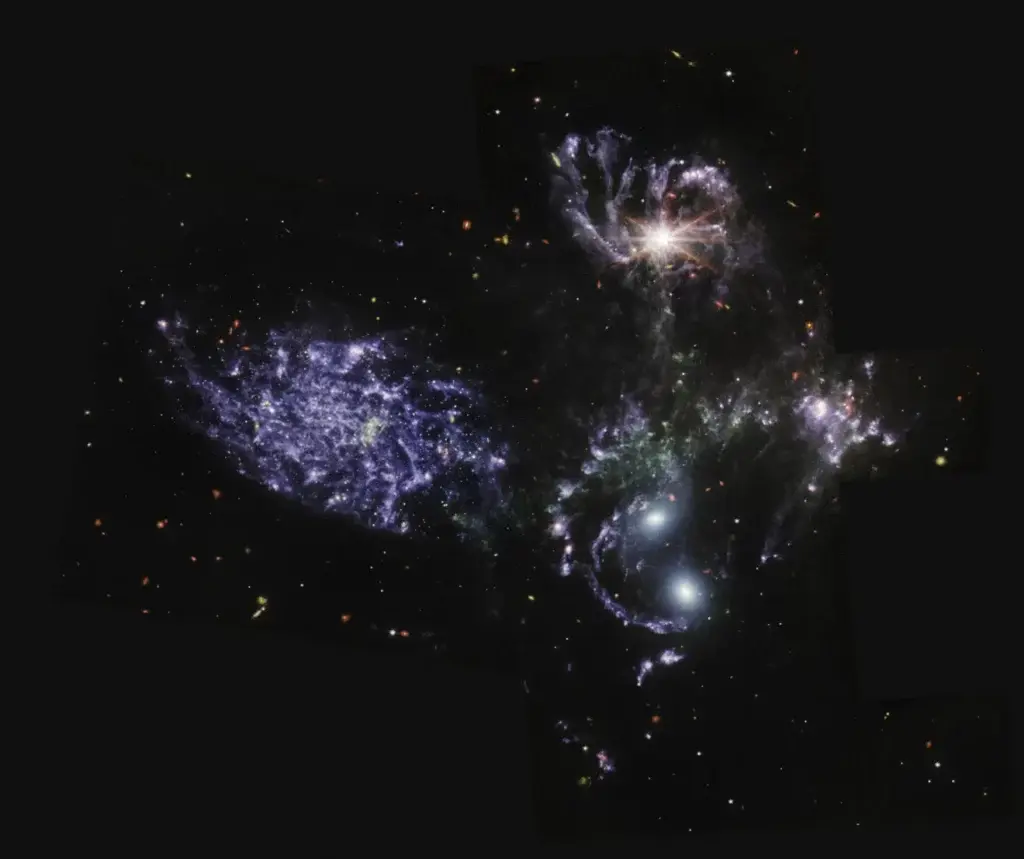
The gas and dust is surrounded by massive heat so hot that it glows so bright. According to the report, the glow of this light is about 40 billion times as bright as the Sun.
2. WASP-96 B
There is a breakdown of light which filters through the atmosphere and can be difficult to capture. However, the capacity of JWST is up to it and there is an image of this breakdown. The breakdown takes place outside the Solar System. At the inception of JWST, there was absolutely no plan for it to capture these exciting things.
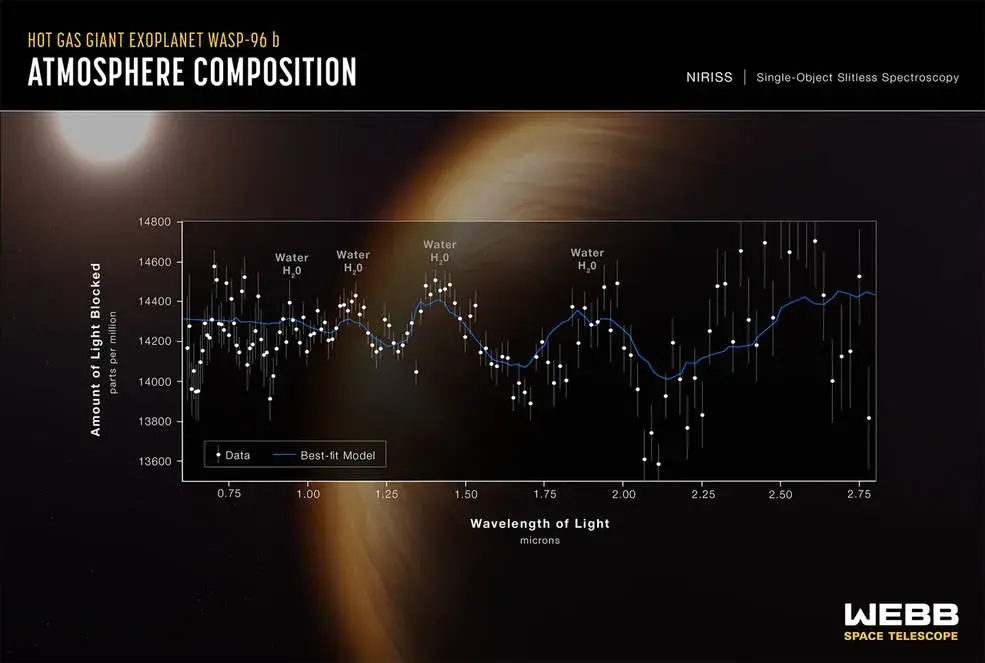
The breakdown is often very faint and small making its capture extremely difficult. In fact, the light of the stars that they orbit usually drowns the breakdown and this even increases the difficulty to capture it. However, with the high precision and power of JWST, it beats all the obstacles. This new image reveals the spectrum of the atmosphere of WASP-96 b. This is a giant planet about half the mass of Jupiter that is mostly gas, according to NASA.
Most likely, this exoplanet does not have any form of life. However, it has some interesting components in its atmosphere.
Knicole Colon, an astrophysicist at NASA’s Goddard Space Flight Center, said during a briefing today on the spectrum.
“What you’re seeing here is the telltale signature, the chemical fingerprint of water vapor… in the atmosphere of this specific exoplanet,”
JWST gets as much as the water of the exoplanet which is not liquid and most likely vapor.
3. Southern Ring Nebula
In the night sky, JWST captures the spellbinding Southern Ring Nebula. It appears as a huge turquoise ring that spans half a light-year across. NASA calls this the “Eight Burst” Nebula. This is because it appears as a figure eight which is lying horizontal. The Southern Ring Nebula contains gasses that are expanding and moving swiftly, These gasses are moving at a speed of nine miles per second.
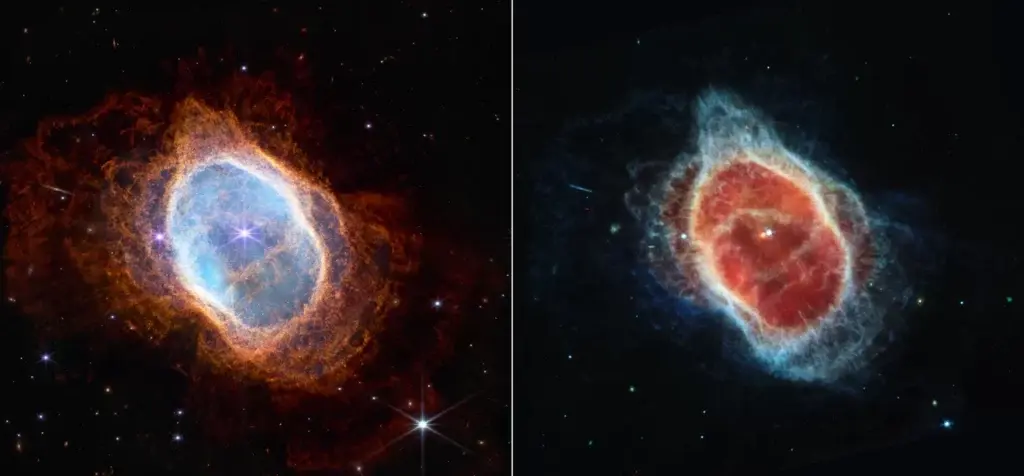
JWST was able to capture two views of the nebula from different instruments. The image on the left is from the observatory’s NIRCam. The image on the right is from JWST’s MIRI instrument. The NIRCam sees near infared and its the telescope’s main camera. However, the MIRI sees mid-infrared. The nebula contains molecular hydrogen, ionized hot gas and other materials. These different materials appears as different colours in the image.
Karl Gordon, an instrument scientist on JWST, said
“As we go into the center, we see kind of the surprise for us, which is we knew this was a binary star, but we effectively didn’t really see much of the actual star that produced the nebula,”
4. SMACS 0723
To an average looker, this image is nothing more than a beautiful sight. However, NASA’s scientists had to give more details about what we are looking at. According to NASA, the image reveals a huge cluster which is 4.6 billion light-years away. They warp space and time around them due to their massive size.
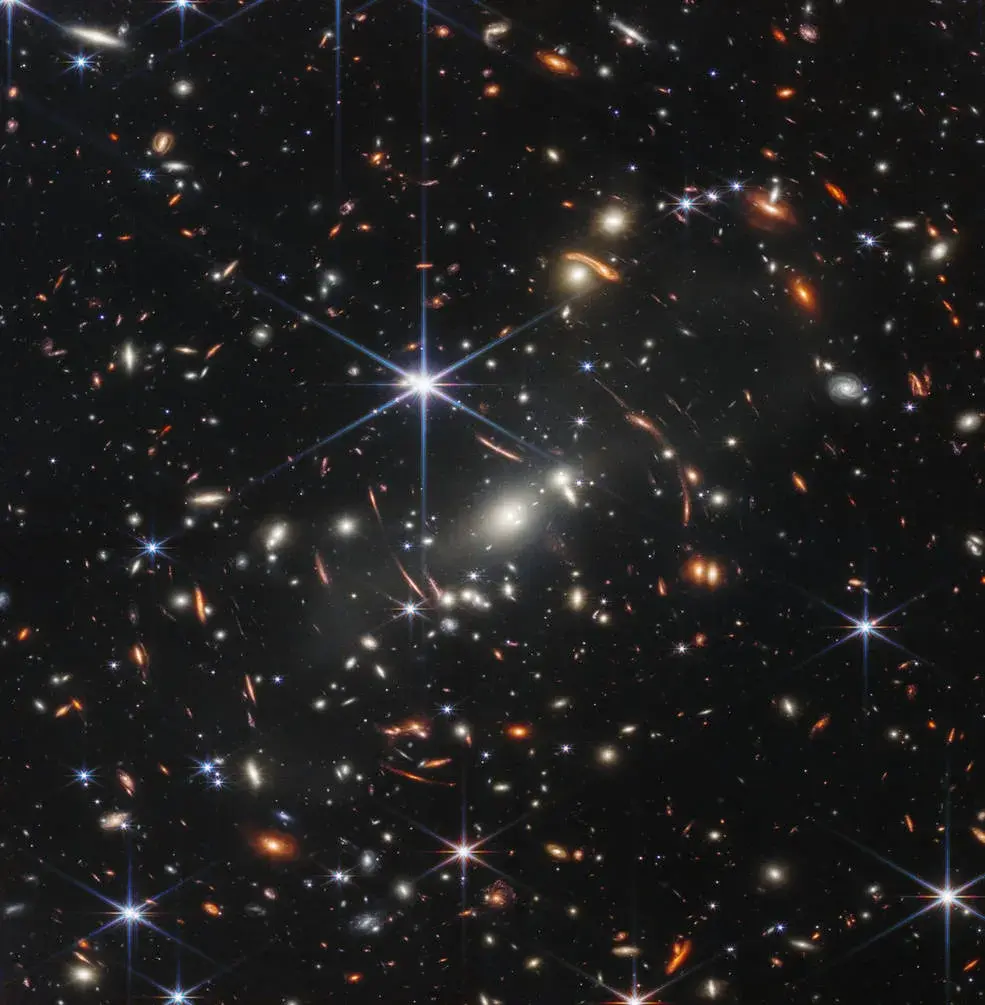
Jane Rigby, operations project scientist for James Webb Space Telescope at NASA, said during the briefing
“The gravity of the cluster is distorting and warping our view of what’s behind,”“And so there are these galaxies that look stretched and pulled, kind of like they’ve been magnified — because they’ve been magnified by the gravity of the cluster just like Einstein said they would.”
5. Carina Nebula
The Carina Nebula is a huge luminous cloud of gas and dust that is about 7,600 light-years from Earth. The Hubble Space Telescope captured the more iconic nebulas. The nebula is a giant, violent and star incubator.
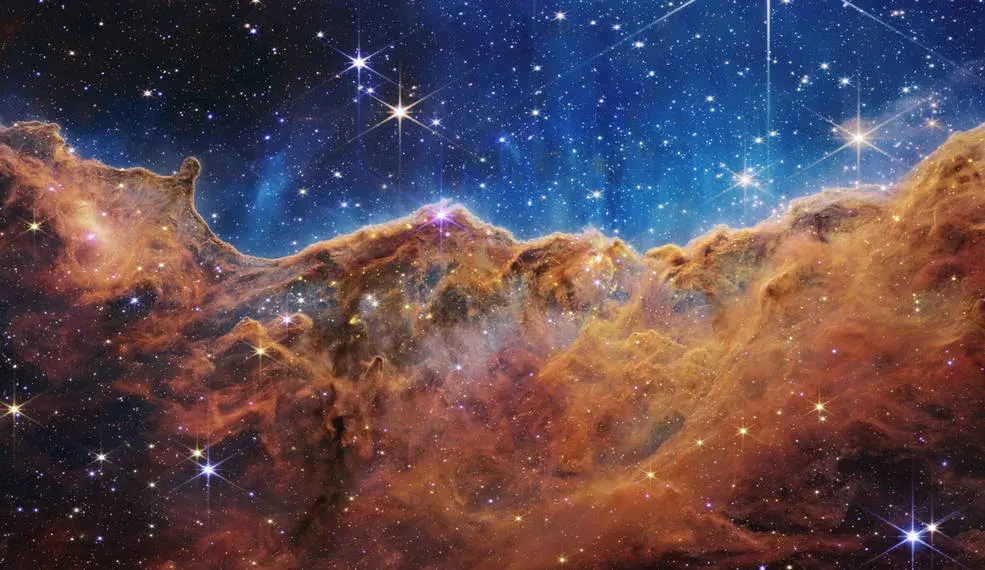
Amber Straughn, deputy project scientist for JWST at NASA, said
“Today, for the first time, we’re seeing brand new stars that were previously completely hidden from our view,”“Honestly, it took me a while to even figure out what to call out in this image. There’s just so much going on here. It’s so beautiful.”“It just reminds me that you know our sun and our planets — and ultimately us — were formed out of the same kind of stuff that we see here,”“We humans really are connected to the Universe. We’re made of the same stuff in this beautiful landscape.”

